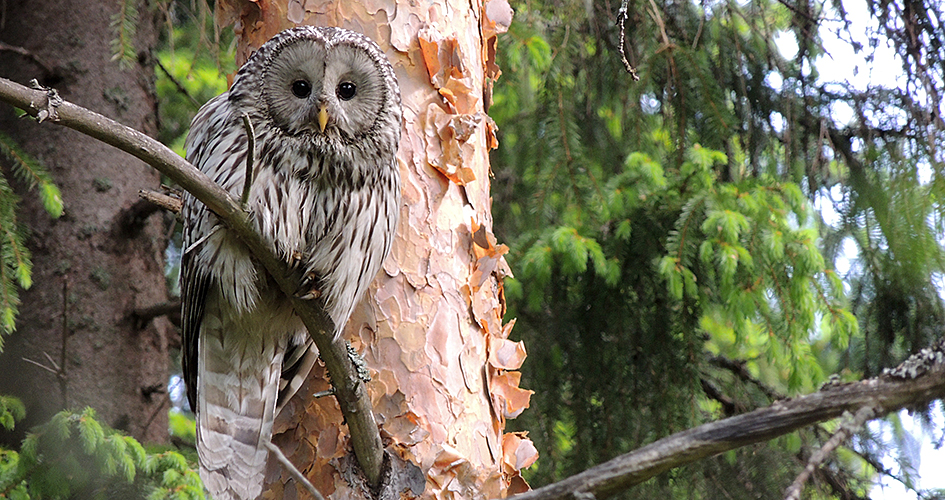 Foto: Karl Nyremo
Foto: Karl NyremoWildlife
The Lower Dalälven river lies along a distinct biological border zone between Norrland and the rest of Sweden. This zone is known as ”Limes Norrlandicus”.
This is a classical concept that manifests itself in a multifaceted amalgamation of natural characteristics of northern and southern Sweden. The high diversity of plant and animal life in Färnebofjärden clearly illustrates this.
Abundant bird life
There is an abundance of wildlife species here, and for bird life in particular, there are few counterparts in the country when it comes to the combination of northern and southern species dependent on forests and wetlands. More than a hundred species nest here regularly. Moreover, there are unusually large populations here of several species that are red-listed – that is, threatened with extinction. For example, birds nesting here include several species of Swedish woodpeckers and several species of owls, among them the Ural owl, which probably has its highest concentration in the country here.
Mammals
Among mammals, there are large populations of elk, roe deer, hare and marten. Lynx occur regularly. There is also a small population of otters. During the latter part of the 1980s, beavers also became established in the area. Today's beaver population is so large that it threatens the flood plain forest. Therefore, for nature conservation reasons, some beaver hunting is carried out in the park.
Rare and threatened insect species
The multitude of forest biotopes, particularly those containing older leafy stands and dead and dying trees, constitute environments for a number of rare and threatened insect species. The many species of wood-living insects here include beetles acutely threatened in Sweden, such as the flat bark beetle, the lucanid beetle, Etorofus pubescens and the little timberman beetle.
Share with your friends
Share this page with your friends on Facebook, X (formerly Twitter), Google+ and e-mail.





